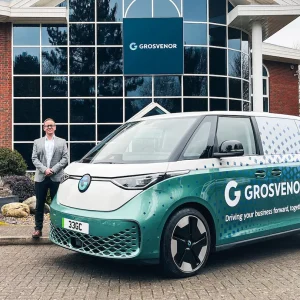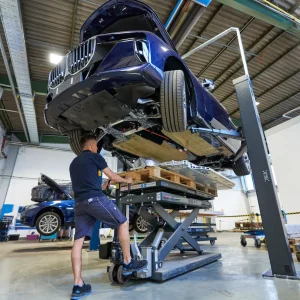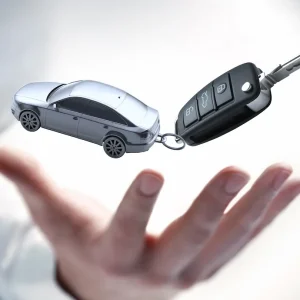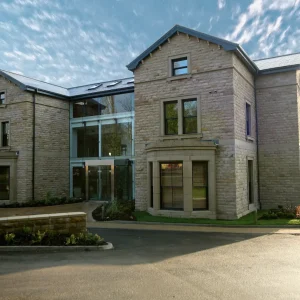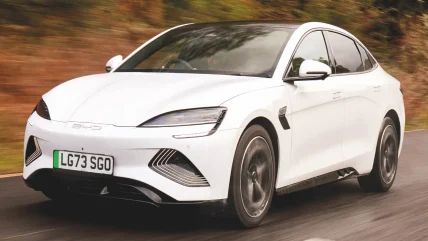
When we spoke to Eris Yahsi (director key accounting and leasing Europe) last year at the launch of the BYD Atto 3, he was saying that fleet business would mostly be generated through dealers and managed centrally – almost a year on, is this still the case? Malcolm Fryer explains: “The UK network comprises several of the big dealer groups that we’ve already signed up and are currently opening showrooms – if they’re not already open! Many of them have their own contract hire and leasing divisions as a separate entity, and those that are slightly smaller, still have their own corporate fleet sales. So, most of the fleet volume that we see distributed will be via the dealer network, as there will be very few direct supply arrangements.
“Direct supply will only involve certain deals with large rental organisations that take our cars in considerable volumes – potentially. Either on risk, or buy back, and we’re open-minded to both. We’re not going to major on daily rental, we’d like a balanced scorecard across all the fleet sectors. So that would be contract hire and leasing, salary sacrifice, we’ve got several subscription services interested in talking with us, so right across the board.
“I think public sector is a particularly interesting area for us. Especially with Atto3 and Dolphin. Dolphin is very keenly priced, it also has very strong residual values forecast by CAP, so we’re very confident that the monthly payments will be keen and competitive against other EVs, but also against ICE rivals importantly.”
Last year was an amazing launch for BYD, but how has the brand been received by fleets? Fryer says: “We’re talking to a lot of the major contract hire and leasing companies, and we’re also talking to several of the corporates, where we need to get on the policy lists.
“Salary sacrifice (sal sac) is becoming increasingly important to us, within the fleet sector, and with sal sac, most organisations sign up to one provider. So, we need to have support terms in place with all the providers of these programmes, to get full access to that part of the market.
“It is about getting on lists, sometimes it takes time to get on to policy lists. Often larger corporates will review their policy lists only two or three times a year. So, there is a lead time for that, but the other area in public sector, is to be on the frameworks – so the Crown Commercial Services framework, The Procurement Partnership, and those sorts of entities. Take the Procurement Partnership for example, they have just over 900 active individual accounts, so being on that framework, that’s ideal, and two recently-appointed dealers are numbers one and two on that framework. That enables people who are signed up to this, to be able to direct-purchase without having to go through the rigours of a formal tender process. So, this streamlines the process and is a major access point into the public sector.”
Three cars, three key sectors – does it make it a lot easier to go to the corporates now? Fyer says: “To have the range from a C-segment through to a D-segment, with the SUV Atto 3, I think is great and adds to the whole proposition, rather than having a single vehicle – which was the position that we launched in. Now, we’re fleshing that out, and covering more of the sectors – that will increase and continue. Having more models gives us a lot more substance and credibility, and people will see BYD as a brand, with multiple vehicles that match segment requirements. If you have one model, it’s quite difficult to tell the story and now we have C-Hatch, C-SUV, D-Sports Saloon, it gives us that stature in the industry.”
Seal has to be a halo car for the brand, so does he think it is going to take sales from established key rivals? “Absolutely,” he says, “the Seal is very much a classic sort of company car, but I think it’s going to appeal in the sal sac sector as well. It will also give a halo lift to Dolphin and Atto 3.
“Fleet customers will decide ultimately the split between the single and dual motor versions of Seal. Personally, I feel it is going to be biased towards the Excellence AWD. The reason I say that is because the price differential over the single-motor version is £3,000, but the CAP forecast residual value is significantly stronger by around 6 percentage points. When the residual value comes into play in terms of monthly payment, I think that’s what’s going to tip the balance – people will see that the actual gap on a monthly payment basis is relatively small.
We’re able to be quite flexible, because we manufacture all the parts of the car, pretty much, so we can react quite quickly, although we have initial launch stock which is about 50:50. After that, we will just tailor our approach to suit the market. I think we’re in a good position, because the whole line-up doesn’t have the complexity some other manufacturers have. The production that has been allocated to us that’s coming through now, is all very sensible. So, the number of different combinations is low in the modern world – so low complexity will mean we’ve got a good chance of satisfying whatever the order demand is. As we see the order demand coming in, we can tweak our production requirements moving forward.

